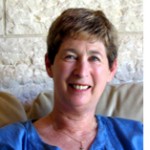By Dorothea Shefer-Vanson

MEVASSERET ZION, Israel — The German Templers were part of the ‘Christian Zionism’ movement whereby the European powers sought to establish their presence in the Holy Land after 1840. Following their charismatic leader, Christian Hoffman, these adherents of the German Lutheran church, primarily in Wurtemberg, established settlements in Jerusalem, Haifa, Galilee and what is now Tel Aviv, in an attempt to bring salvation to the Jewish and Muslim denizens of the region.
They combined their calling as emissaries of the true faith with the practical need to support themselves in their new home. As they had been farmers in their country of origin they engaged primarily in agriculture, building houses according to the German rural pattern, cultivating the land and creating a pleasant and aesthetic environment. They served as a model for the Jewish pioneers who came to the country, and in many cases provided instruction and guidance for the newcomers.
The first group of 72 people settled in Haifa at the foot of Mount Carmel in 1868, preceding the first wave of modern Jewish immigration by fourteen years. But that influx, largely sponsored and funded by Lord Rothschild, consisted of thousands of people and soon became the predominant element in the population. The Templers built seven small settlements in various parts of the country and one of them, just outside the walls of Jerusalem, is known to this day as the German Colony. As well as engaging in agricultural activity, the Templers also participated in the modernization of Palestine, introducing mechanized farming machinery, paved roads and the use of electricity in their homes.
In 1987 the late Professor Alex Carmel established a Chair for Research into the Christian Contribution to the Development of Palestine at the University of Haifa, as well as the Gottlieb Schumacher Institute, paying tribute to one of the Templers who engaged in exploring the Holy Land. It was Professor Carmel who insisted on spelling the name of these Templers with two ‘e’s’ to distinguish them from the medieval Templars, on whom they modeled themselves. This I learned when I translated his fascinating doctoral thesis on the Templers well before he became a professor.
In the 1930s, a number of the Templers in Palestine joined the Nazi Party, and one of them, a certaini Cornelius Schwartz, was appointed head of the Templer community. They made no secret of their allegiance, and even ventured to march through the streets of Jerusalem, occasionally in Nazi uniform, bearing aloft the flag of the Third Reich.
It was at this point that the Templers switched from religious Messianism to political Messianism, according to Professor Yossi Ben-Artzi, Rector of the University of Haifa, although less than 20 percent of the Templers were members of the Nazi Party in 1938. Some of them returned to Europe to fight in the German Army, and in 1942, a young Jew, Noah Klieger, was summoned to Gestapo headquarters in Brussels, and was stunned when he was addressed in Hebrew by the German officer there, Joachim Erdman. He was told later that Erdman had grown up in a Templer village in Samaria.
After the outbreak of the Second World War the British authorities in Palestine interned the Templers in camps, deported approximately 600 Templers to Australia, and returned about one thousand of them to Germany in exchange for some five hundred and fifty Jews who had been in concentration camps. This unprecedented move brought those thus saved to British-controlled Palestine.
Among those rescued were relatives of mine, who regarded their release from the concentration camp as little short of miraculous, as indeed it was. The family’s subsequent ordeal in enduring the seige of Jerusalem led them to eventually leave Israel and settle in London, though subsequently some of their children did return to Israel.
*
Shefer-Vanson is a freelance writer and author of Time Out of Joint, a novel tracing the lives of a German Jewish family before and through the Holocaust. Now based in the Jerusalem suburb of Mevasseret Zion, she may be contacted via dorothea.shefer@sdjewishworld.com